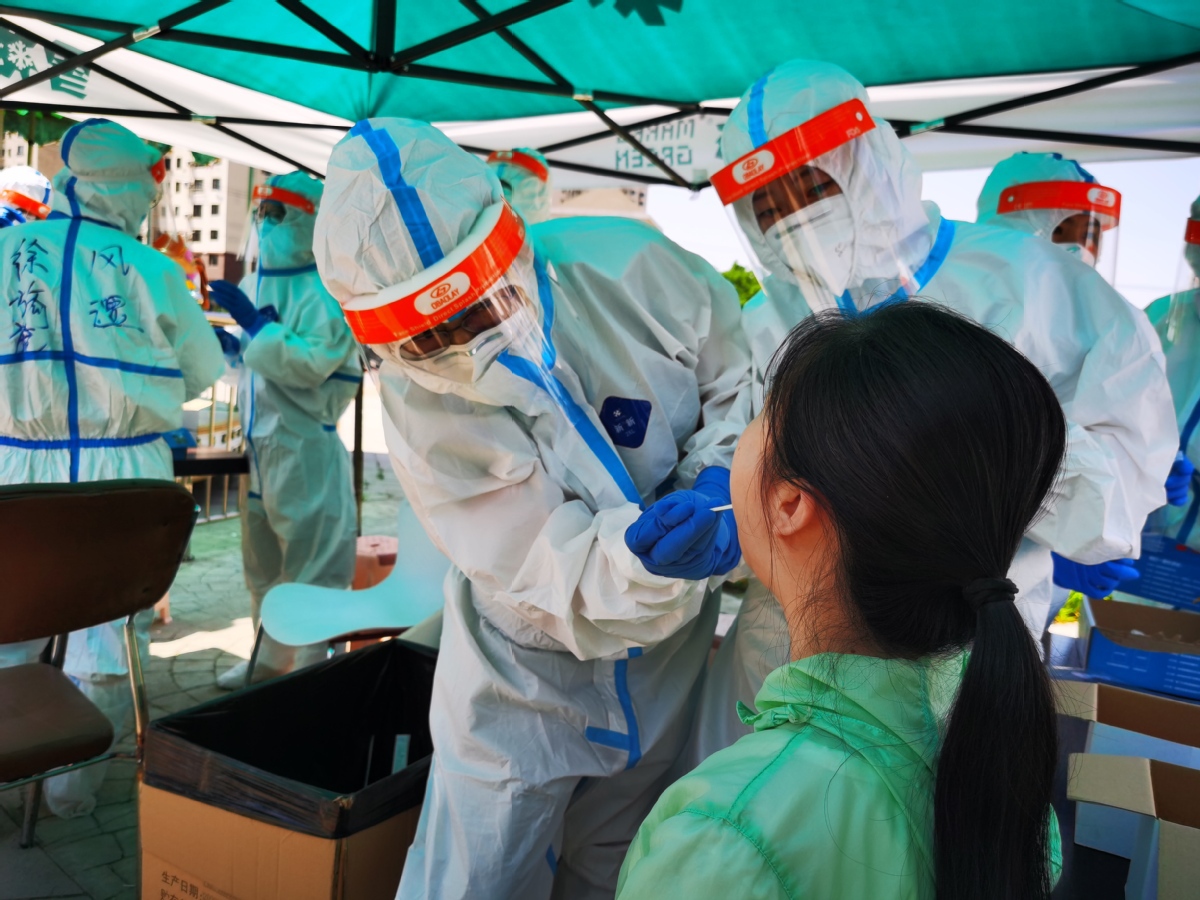Still work to do to keep virus in check: China Daily editorial


A total of 57 domestic novel coronavirus infections were registered in the 24 hours of Sunday on the Chinese mainland, the highest since March 6. The Hong Kong Special Administrative Region reported 128 on the same day, of which 103 were local infections.
These show how vigilance and a swift response are crucial to prevent the virus gaining a foothold and rebounding.
Of the 57 new infections diagnosed on the mainland on Sunday, 41 were in the Xinjiang Uygur autonomous region, 14 in Liaoning province, and two others in neighboring Jilin province attributable to the Liaoning cluster. About half of the cases were confirmed among asymptomatic infections found earlier — 15 in Xinjiang and all 14 in Liaoning. Another 50 asymptomatic cases have been detected in Xinjiang and Liaoning.
Meanwhile, Hubei province, whose capital city Wuhan was once the front line for the battle against the virus in China, but which has had no new infections for weeks, has just reported that by the end of June, nearly 99 percent of local businesses and their employees had resumed normal work, including 87 percent of small and medium-sized businesses.
If the swift recovery of Hubei province indicates the efficacy of seemingly harsh early intervention measures to stem the spread of the epidemic, the recent outbreak and subsequent suppression in Beijing offer new proof that such measures can be targeted at specific high-risk areas and still be effective in containing the virus while allowing economic activities in low-risk areas to continue.
This presents precious reference for Xinjiang, Liaoning, and even Hong Kong. Lockdowns are a key factor in containing the transmission of the virus. Which is why residential communities in both Dalian, Liaoning province, and Urumqi, capital of Xinjiang, have been placed under lockdown, with authorities declaring a "wartime mode" to combat the virus.
But not every country or government is willing, ready or capable of transplanting what has proven effective in Chinese practice. At least on the mainland, there is a prevailing consensus this is the path to follow to suppress any rebound, especially when it comes to restraining the virus from spreading far afield.
National and local authorities alike are closely following the "early detection, early intervention" principle in dealing with the latest cases, trying hard to prevent major cross-region spread. Responding as swiftly as possible will keep the transmission chains as short as can be, making it easier to trace and test the close contacts of those infected.
The Chinese authorities have rolled out mass testing for hundreds of thousands of people in the port city of Dalian. A second wave of mass testing was launched in Urumqi on Sunday to detect residents who are infected but had previously tested negative.
The real trouble now and which makes the virus unpredictable is the number of asymptomatic infections, whose scale to a great extent remains unknown. It is hoped the authorities' current approach — double testing — works to identify those who are infected but asymptomatic.

































